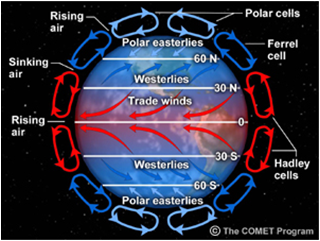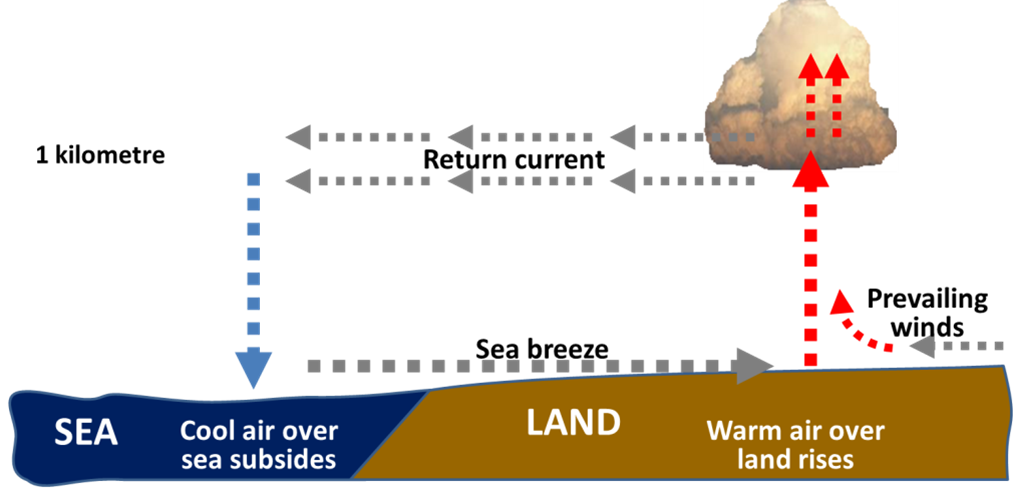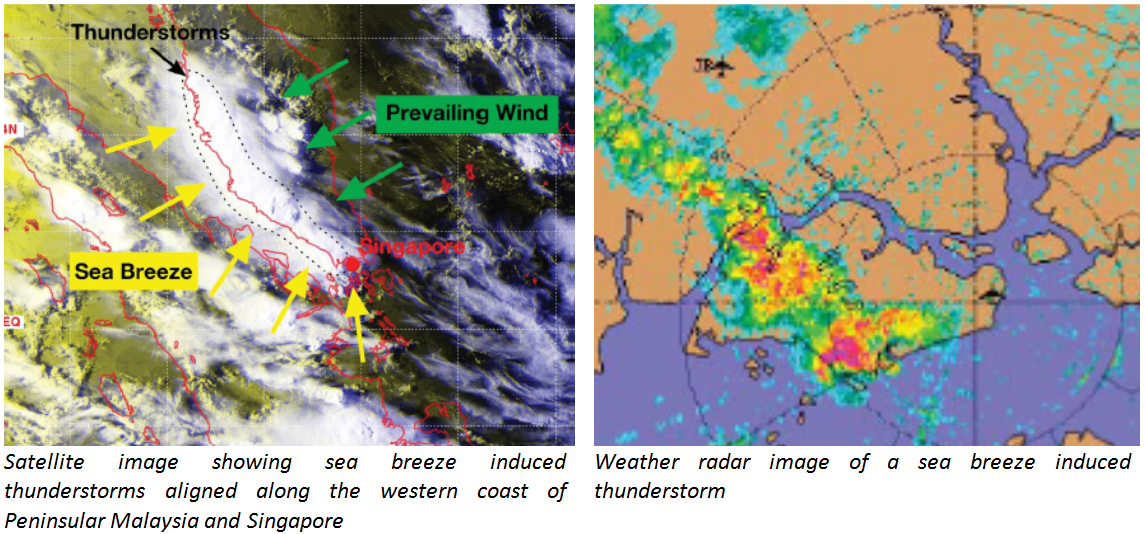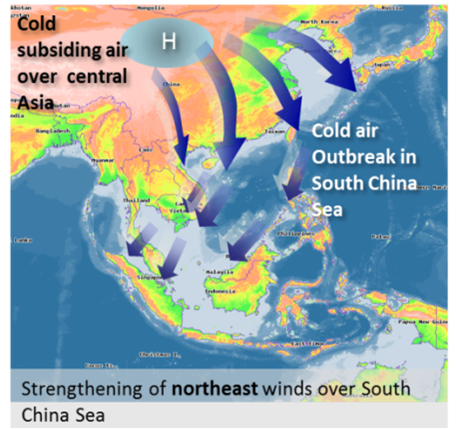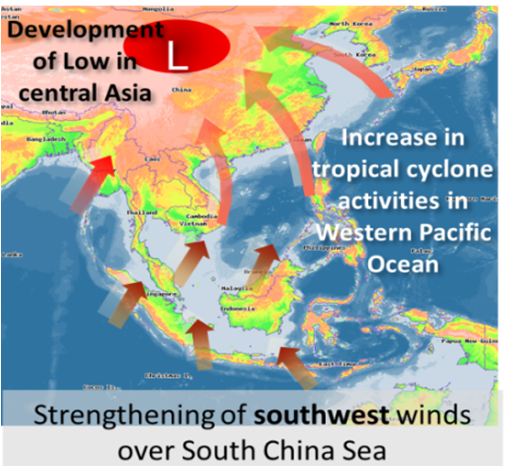- Home
- Learn
- Winds - Weather Information Portal
Winds - Weather Information Portal
Winds can take the form of a gentle breeze or a raging hurricane
Winds blow wherever there is a difference in air temperature and pressure, always flowing from high to low pressure. The world’s winds are part of the global air circulation that transports warm air from the equator to the poles, and cold air the opposite way, thus keeping global temperatures in balance.
Schematic of the global circulation (Image credit: COMET)
Winds are described by the direction they blow from – an easterly wind blows from the east, a northerly from the north. Prevailing winds, those that blow fairly steadily, are arranged in a series of belts around the globe.
Due to the earth’s rotation, winds deflect to the right north of the equator, and to the left south of the equator. This is known as the Coriolis effect, which produces global wind patterns. Winds blowing from the subtropics towards the equator (trade winds) become northeasterlies (southeasterlies) north (south) of the equator. On the polar side of the subtropics, winds are deflected to give rise to the prevailing westerlies.
A number of effects cause localized winds that affect certain areas of a country. The main effects are sea and land breezes, valley winds and mountain winds. The breezes occur because water and land absorb and lose heat from the sun at different rates.
In Singapore, the sea breeze effect produces the localised afternoon showers and thunderstorms that are common throughout the year.
Schematic of the sea breeze effect
During the day, the land heats much more quickly than the sea, causing air over land to rise. As the warm air rises, cool air from the sea is blown in underneath, producing a sea breeze blowing inland. Cumulus and cumulonimbus clouds develop as the sea breeze front converges with the prevailing winds inland.
The situation is reversed at night, with the cool air over land drawn in under the warm air over the sea, producing a generally weaker land breeze.
Monsoons are large-scale, seasonally changing wind circulations that form due to the temperature differences between land and ocean, like a giant sea breeze.
Monsoons dominate the climate in the tropical regions of Asia, including Singapore. They are known locally as the Northeast Monsoon and the Southwest Monsoon, and are responsible for much of the variation in rainfall over the regions throughout the year.
The Northeast Monsoon develops during the northern hemisphere winter between December and March, when the land over much of continental Asia is colder than the ocean. This causes sinking cold air over land to blow towards the ocean, replacing the void left by the rising warm air over the ocean. As the cold air flows southward towards the low pressure systems in the southern hemisphere, it warms up and moistens, leading to the formation of dense rain clouds in the equatorial region.
The start of the Northeast Monsoon usually heralds the wettest months (wet phase), while its tail end brings the driest months (dry phase), as the ITCZ begins to migrate south.
The Southwest Monsoon develops during the southern hemisphere winter between June and September, when cold subsiding air flows from the high pressure systems in the southern hemisphere to the warm northern hemisphere.
Monsoon winds are influenced by the Coriolis effect such that surface winds are deflected to the right in the northern hemisphere to become northeasterly winds during the Northeast Monsoon. During the Southwest Monsoon, they are deflected to the left to become southwesterly winds.
In between the two monsoon seasons is an inter-monsoon period which is characterised by light and variable winds and warm temperatures. Singapore experiences two inter-monsoon periods in April-May and October-November.

